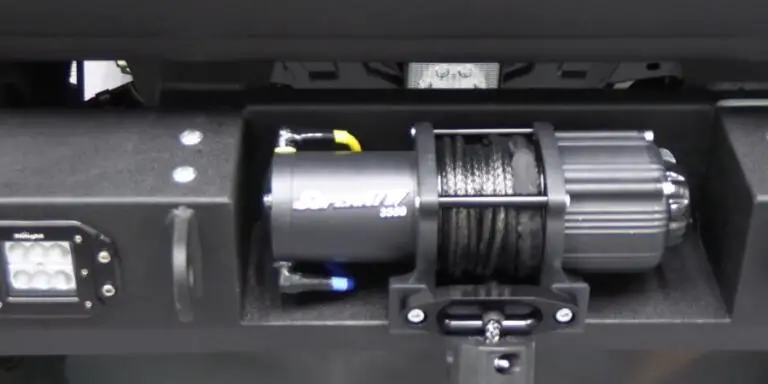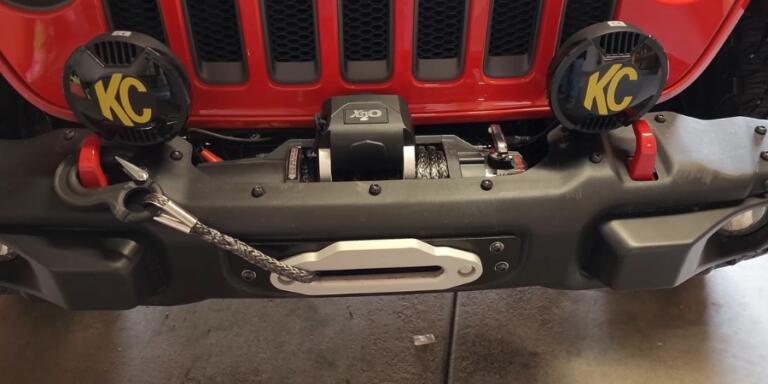How to Use a Winch to Pull a Car
Winches come in a variety of varieties, including electrical, hydraulic, and air winches. A winch is a piece of machinery used to raise heavy items using a pulley system.
This machine can be driven manually or fastened to a moving object.
It is frequently used to pull a trailer or a car across rough terrain or up or down a steep incline, and it is frequently used by construction workers to raise heavy objects.
A car won’t be prepared for significant off-roading without a winch on its bumper.
Despite the fact that they don’t have a cool aesthetic, Winches aren’t simply for show, they are useful tools that can rescue you and other motorists from sticky circumstances.
Why do I need a winch in my car
4x4s can self-rescue and recover other vehicles thanks to cable winches. Installing a winch on your vehicle or SUV is necessary if you want to drive through deep mud or other hazardous terrains.
However, not understanding how to operate a winch when you need one is about as beneficial as not having one. It’s crucial to understand how to use a winch safely and effectively in various circumstances where vehicle recovery is required.
A winch is a pulling device often mounted on a car’s front bumper. When a vehicle becomes stuck in mud, snow, a ditch, etc., it is used to recover the vehicle to which it is affixed or other vehicles.
A winch is made up of various components, including the engine, the gears, and the drum (the cylinder on which the cable is wound).
Winches are frequently seen on pickup trucks, Tacomas, F-150 Raptors, and SUVs like Jeeps and 4Runners. Any vehicle cannot just have a winch added. If you intend to add a bumper to your truck or SUV, it must be winch-capable.
Winch Safety Tips
Winches are strong equipment that produces forces that, if not controlled with the proper safety precautions, can be very harmful.
Winches are straightforward tools, but if used incorrectly, they can be highly deadly.
Before you head out on the trail, it’s essential to understand how to use them. There are fundamental safety principles that apply in all circumstances, yet varied contexts call for different winching approaches.
- Always wear gloves
- Always use a damper
- Never double the winch cable back or attach it to itself
- Never stand close to the cable while in use
- Never step over the winch cable
- Don’t use a dead tree as an anchor
- Don’t winch too quickly
- Don’t drive the vehicle that’s doing the winching during recovery
- Don’t connect to a non-structural point on a stuck vehicle
How to use a winch to pull a car
Off-roading can be fun, crazy, muddy, heart-pumping, and a myriad of other wonderful things. It can also get your vehicle irreversibly or dangerously stuck unless the proper procedures for using a winch are followed.
Every situation and vehicle is different, but following these simple steps will enable you to recover your vehicle as effortlessly as possible.
Step 1:
Evaluate the situation and check if you can identify other options to recover your vehicle.
If you have other people traveling with you, you may want to inform them where cables and chains will be placed to relocate the vehicle to another area.
Step 2:
Whenever you handle the metal rope, make sure that you use heavy-duty gloves. This is mainly because the winch cable wires may come out or splinter, causing injuries to the exposed skin.
Clear the area near the tires by using a hand shovel. Create an upward slope towards the direction of the pull to facilitate movement.
Step 3:
Wrap a chain around the body of a sturdy pulling structure and attach your vehicle to it.
If you are using a live tree, use a rubber mat, commonly of five feet square area, to preserve the bark.
Wrap the rubber mat at the backside and make sure that it creates a protective layer between the tree and the metal chain.
Step 4:
Next, attach the chain to the winch’s cable hook. Make sure that you can wind the cable around the drum for at least three full rounds before you exert any power on the winch cable.
In case you find the cable too short, use an extension cable with the clevis hooks. Ensure that individuals are moved away from the path of the cable-pulling winch.
It is not a good idea to pull your vehicle at an angle. The cable should be aligned smoothly and evenly around the winch drum. The cable should not get piled up around itself.
Step 5:
Attach the snatch block to pull your vehicle in a straight line using a rubber mat and the chain.
This arrangement will rectify the angle of pull. Now fix the snatch block to another tree using the same approach that you have already used to loop the chain around a tree for the first time.
Allow the winch cable to be pulled directly into the winch drum by letting the winch cable pass through the pulley of the snatch block. Notably, you can use this snatch block arrangement to pull any vehicle by using the winch drum assembly most appropriately.
Final words
The process of winching another vehicle is mostly the same as self-recovering. You just attach the winch hook right to the stuck rig instead of a tree or other anchor.
Be sure to use a structural point, otherwise, you may end up pulling off their bumper.
Always use the winch of the vehicle that isn’t stuck if you’re recovering someone else.
You’ll also want to make sure the winching vehicle is steady. Keep the brake engaged while you’re using the winch on the other vehicle.
It’s not a good idea to use your vehicle as a pulling force. If a hard jolt is what’s necessary to free the other vehicle, then a kinetic recovery rope is a better option. We hope you get a winch installed now.


